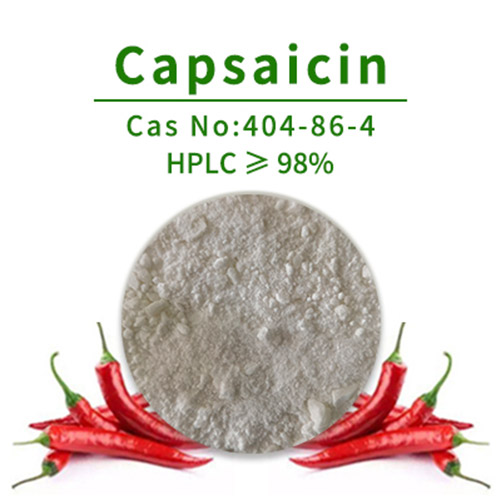The Remarkable Benefits of Capsaicin: Nature’s Spicy Powerhouse
Capsaicin, the fiery compound found in chili peppers, has long been known for its ability to add heat to dishes, but its benefits extend far beyond the culinary world. This naturally occurring alkaloid is responsible for the spiciness of peppers, and it interacts with our bodies in fascinating ways. From relieving pain to boosting metabolism, improving cardiovascular health, and even fighting cancer, capsaicin is a true powerhouse in natural health remedies. This article delves into the various benefits of capsaicin, backed by scientific research and traditional uses, showcasing why this compound is garnering attention as a versatile tool for enhancing health and well-being.
What is Capsaicin?
Capsaicin (8-methyl-N-vanillyl-6-nonenamide) is the primary active component in chili peppers, belonging to the genus Capsicum. This compound is most concentrated in the placental tissues of the pepper, the inner membrane that holds the seeds. When consumed or applied topically, capsaicin interacts with sensory neurons, particularly the transient receptor potential vanilloid 1 (TRPV1) receptor, also known as the capsaicin receptor.
The TRPV1 receptor is a heat-activated calcium channel that opens in response to high temperatures or acidic conditions. Capsaicin binds to this receptor, mimicking the sensation of heat, which explains why eating spicy food feels like your mouth is on fire. However, beyond this burning sensation, capsaicin has profound effects on the body that have been harnessed for therapeutic purposes.
Historically, chili peppers have been used in traditional medicine for centuries, particularly in cultures where they are a dietary staple. Native American, Chinese, and Ayurvedic medicine practitioners have utilized chili peppers for their purported benefits, from treating pain and digestive issues to enhancing circulation and fighting infections. Modern science has since validated many of these traditional uses, positioning capsaicin as a valuable compound in both medical and wellness contexts.
The Science Behind Capsaicin’s Effects
The key to understanding capsaicin’s effects lies in its interaction with the TRPV1 receptor. When capsaicin binds to this receptor, it triggers a cascade of physiological responses. The initial response is the release of substance P, a neuropeptide involved in transmitting pain signals to the brain. However, with prolonged exposure, capsaicin depletes substance P from the nerve endings, leading to reduced pain sensation. This paradoxical effect—where a pain-inducing compound ultimately reduces pain—forms the basis of capsaicin’s use in pain management.
Furthermore, capsaicin-induced activation of TRPV1 receptors leads to the release of endorphins, the body’s natural painkillers. This not only contributes to pain relief but also explains the euphoric feeling some people experience after consuming spicy foods.
Capsaicin also exhibits anti-inflammatory properties, which are partly mediated through its effects on TRPV1 receptors. By modulating inflammatory pathways, capsaicin can reduce the production of pro-inflammatory cytokines and enzymes, making it beneficial for conditions characterized by chronic inflammation.
Pain Relief: Capsaicin as a Natural Analgesic
One of the most well-documented uses of capsaicin is in the relief of pain, particularly chronic pain conditions. Topical creams and patches containing capsaicin are widely used to manage pain associated with conditions such as osteoarthritis, rheumatoid arthritis, neuropathy, and muscle pain. The effectiveness of capsaicin in these applications has been supported by numerous clinical studies.
For instance, a study published in the Journal of Pain Research demonstrated that a capsaicin patch applied once every 12 weeks provided significant pain relief in patients with postherpetic neuralgia, a chronic pain condition that can occur after shingles. Similarly, research in the British Journal of Anaesthesia found that capsaicin cream was effective in reducing pain in patients with osteoarthritis of the knee.
Capsaicin works by desensitizing the TRPV1 receptors in the skin, leading to a reduction in pain transmission. Over time, this desensitization can provide lasting relief from chronic pain, making capsaicin a valuable tool in pain management, particularly for individuals seeking alternatives to traditional pain medications like opioids.
Anti-Inflammatory and Antioxidant Properties
Inflammation is at the root of many chronic diseases, including arthritis, cardiovascular disease, and even cancer. Capsaicin’s anti-inflammatory properties have been the subject of extensive research, with studies showing that it can inhibit the production of pro-inflammatory molecules such as tumor necrosis factor-alpha (TNF-α) and interleukin-6 (IL-6). By reducing these inflammatory markers, capsaicin can help alleviate symptoms of inflammatory conditions and potentially prevent the progression of disease.
In addition to its anti-inflammatory effects, capsaicin is also a potent antioxidant. Antioxidants are compounds that neutralize free radicals, unstable molecules that can damage cells and contribute to aging and disease. Capsaicin’s antioxidant properties help protect cells from oxidative stress, which is a key factor in the development of chronic diseases such as cancer, cardiovascular disease, and neurodegenerative disorders.
Research published in the Journal of Agricultural and Food Chemistry found that capsaicin effectively scavenges free radicals and inhibits lipid peroxidation, a process that can lead to cell membrane damage. This dual action of capsaicin—reducing inflammation and oxidative stress—makes it a promising candidate for the prevention and treatment of chronic diseases.
Capsaicin and Metabolism: Aiding in Weight Loss
Capsaicin’s role in metabolism and weight management has garnered significant attention, particularly in the context of the obesity epidemic. Capsaicin has been shown to increase energy expenditure through a process known as thermogenesis, where the body generates heat by burning calories. This thermogenic effect is primarily mediated through the activation of TRPV1 receptors, which increase the metabolic rate and promote fat oxidation.
A study published in the American Journal of Clinical Nutrition found that capsaicin consumption increased energy expenditure and fat oxidation in healthy individuals. The researchers concluded that capsaicin could be an effective dietary supplement for weight loss and weight management.
In addition to boosting metabolism, capsaicin has also been shown to suppress appetite. A study in the European Journal of Nutrition demonstrated that participants who consumed capsaicin-rich meals experienced a reduction in hunger and an increase in feelings of fullness, leading to a lower overall calorie intake.
Capsaicin’s ability to enhance metabolism and reduce appetite makes it a popular ingredient in weight loss supplements and dietary products. However, it’s important to note that the effects of capsaicin on weight loss are modest, and it should be used in conjunction with a healthy diet and regular exercise for best results.
Cardiovascular Health Benefits
Cardiovascular disease is the leading cause of death worldwide, and there is growing interest in natural compounds that can support heart health. Capsaicin has been shown to have several beneficial effects on cardiovascular health, including improving blood circulation, reducing blood pressure, and lowering cholesterol levels.
Capsaicin promotes vasodilation, the widening of blood vessels, which can help reduce blood pressure and improve blood flow. A study published in the Journal of Clinical Investigation found that capsaicin activates the TRPV1 receptor in blood vessels, leading to the release of nitric oxide, a molecule that relaxes blood vessels and lowers blood pressure.
In addition to its effects on blood pressure, capsaicin has also been shown to reduce cholesterol levels. Research in the Journal of Agricultural and Food Chemistry found that capsaicin reduced levels of low-density lipoprotein (LDL) cholesterol, often referred to as “bad” cholesterol, in animal models. The study suggested that capsaicin could help prevent the buildup of cholesterol in the arteries, reducing the risk of atherosclerosis and heart disease.
These cardiovascular benefits make capsaicin a valuable addition to a heart-healthy diet. However, as with any supplement, it’s important to use capsaicin in moderation and under the guidance of a healthcare professional, particularly for individuals with pre-existing cardiovascular conditions.
Capsaicin and Digestive Health
Capsaicin has a complex relationship with the digestive system. On one hand, it can irritate the stomach lining, leading to discomfort for some individuals. On the other hand, capsaicin can stimulate digestion by increasing the production of digestive fluids, including saliva and gastric juices.
Capsaicin’s effects on digestion are largely mediated through its interaction with the TRPV1 receptors in the gastrointestinal tract. Activation of these receptors leads to the release of gastric juices, which can aid in the digestion of food. Capsaicin has also been shown to stimulate the production of saliva, which contains enzymes that begin the process of digestion in the mouth.
In addition to its digestive benefits, capsaicin may also promote gut health by supporting the growth of beneficial bacteria in the intestines. A study published in the Journal of Food Science found that capsaicin promoted the growth of probiotic bacteria, which play a key role in maintaining a healthy gut microbiome.
However, it’s important to note that capsaicin can be irritating to the digestive system, particularly for individuals with conditions like gastroesophageal reflux disease (GERD) or irritable bowel syndrome (IBS). For these individuals, it may be best to consume capsaicin in moderation or avoid it altogether.
Capsaicin in Sinus Relief and Respiratory Health
Capsaicin has been used in nasal sprays to relieve sinus congestion and improve respiratory health. When applied to the nasal passages, capsaicin helps thin mucus, making it easier to clear and reducing nasal congestion. This can be particularly beneficial for individuals with chronic sinusitis or allergic rhinitis.
A study published in the Annals of Allergy, Asthma & Immunology found that capsaicin nasal spray was effective in reducing symptoms of nasal congestion and improving breathing in individuals with non-allergic rhinitis. The researchers suggested that capsaicin’s ability to desensitize the TRPV1 receptors in the nasal passages may contribute to its decongestant effects.
In addition to its effects on nasal congestion, capsaicin may also help prevent sinus-related headaches. By reducing inflammation and improving mucus clearance, capsaicin can help alleviate the pressure that leads to sinus headaches.
Antimicrobial Properties of Capsaicin
Capsaicin has demonstrated antimicrobial properties, making it effective against a variety of bacteria, fungi, and viruses. This makes capsaicin a potential natural alternative to synthetic antimicrobial agents, particularly in the context of food preservation and infection control.
Research published in the Journal of Applied Microbiology found that capsaicin inhibited the growth of several pathogenic bacteria, including Escherichia coli and Staphylococcus aureus. The study suggested that capsaicin’s antimicrobial properties could be harnessed in the development of natural preservatives and antimicrobial treatments.
Capsaicin’s antimicrobial effects are not limited to bacteria; it has also shown efficacy against fungi and viruses. A study in the Journal of Medical Virology found that capsaicin inhibited the replication of the herpes simplex virus, suggesting potential applications in antiviral therapies.
These antimicrobial properties make capsaicin a valuable tool in preventing foodborne illnesses and promoting oral health. However, more research is needed to fully understand the mechanisms behind capsaicin’s antimicrobial effects and its potential applications in medicine.
Capsaicin in Cancer Research
Emerging research suggests that capsaicin may have potential as an anticancer agent. Studies have shown that capsaicin can induce apoptosis, or programmed cell death, in cancer cells, while leaving healthy cells largely unaffected. This selective toxicity makes capsaicin a promising candidate for cancer prevention and therapy.
Research published in the Cancer Research journal found that capsaicin induced apoptosis in prostate cancer cells by disrupting mitochondrial function and activating apoptotic pathways. The study also found that capsaicin inhibited the growth of prostate tumors in animal models.
Capsaicin has also shown potential in the treatment of other types of cancer, including breast, lung, and colon cancer. A study in the Journal of Clinical Oncology found that capsaicin inhibited the growth of breast cancer cells by blocking the activation of a key signaling pathway involved in cell proliferation.
While these findings are promising, it’s important to note that most research on capsaicin’s anticancer effects has been conducted in vitro or in animal models. More clinical trials are needed to determine the safety and efficacy of capsaicin as a cancer treatment in humans.
Capsaicin in Skin Care
Capsaicin’s ability to improve blood circulation and reduce inflammation has led to its use in topical skin treatments. Capsaicin creams and ointments are used to treat conditions like psoriasis, eczema, and acne, where inflammation and poor blood flow contribute to symptoms.
A study published in the Journal of Investigative Dermatology found that capsaicin cream was effective in reducing the severity of psoriasis symptoms in patients. The study suggested that capsaicin’s anti-inflammatory properties, combined with its ability to desensitize sensory nerves, contributed to the improvement in symptoms.
In addition to its use in treating inflammatory skin conditions, capsaicin may also promote overall skin health by improving circulation. Increased blood flow delivers more oxygen and nutrients to the skin, which can enhance the skin’s appearance and promote healing.
However, it’s important to use capsaicin-based skin products with caution, as they can cause irritation, especially in individuals with sensitive skin. It’s recommended to perform a patch test before applying capsaicin to larger areas of the skin and to follow the product’s instructions carefully.
Safety and Side Effects
While capsaicin offers a range of health benefits, it’s important to use it safely and be aware of potential side effects. Capsaicin can cause a burning sensation when it comes into contact with the skin or mucous membranes, which can be uncomfortable or even painful for some individuals.
Ingesting large amounts of capsaicin can lead to gastrointestinal discomfort, including nausea, stomach pain, and diarrhea. Individuals with digestive conditions like GERD or IBS should be particularly cautious when consuming capsaicin, as it can exacerbate symptoms.
Topical capsaicin products can also cause skin irritation, redness, and burning. It’s important to follow the product’s instructions and avoid applying capsaicin to broken or irritated skin.
Despite these potential side effects, capsaicin is generally considered safe when used in moderation. It’s always a good idea to consult with a healthcare professional before incorporating capsaicin into your diet or health regimen, particularly if you have any pre-existing health conditions or are taking medications.
Conclusion
Capsaicin, the fiery compound that gives chili peppers their heat, is much more than a culinary ingredient. Its wide-ranging health benefits, from pain relief and anti-inflammatory effects to metabolism boosting and cancer-fighting potential, make it a valuable addition to any natural health regimen. While capsaicin offers many benefits, it’s important to use it responsibly and be mindful of potential side effects. As research continues to uncover the full extent of capsaicin’s therapeutic potential, this powerful compound may play an increasingly important role in modern medicine and wellness.









